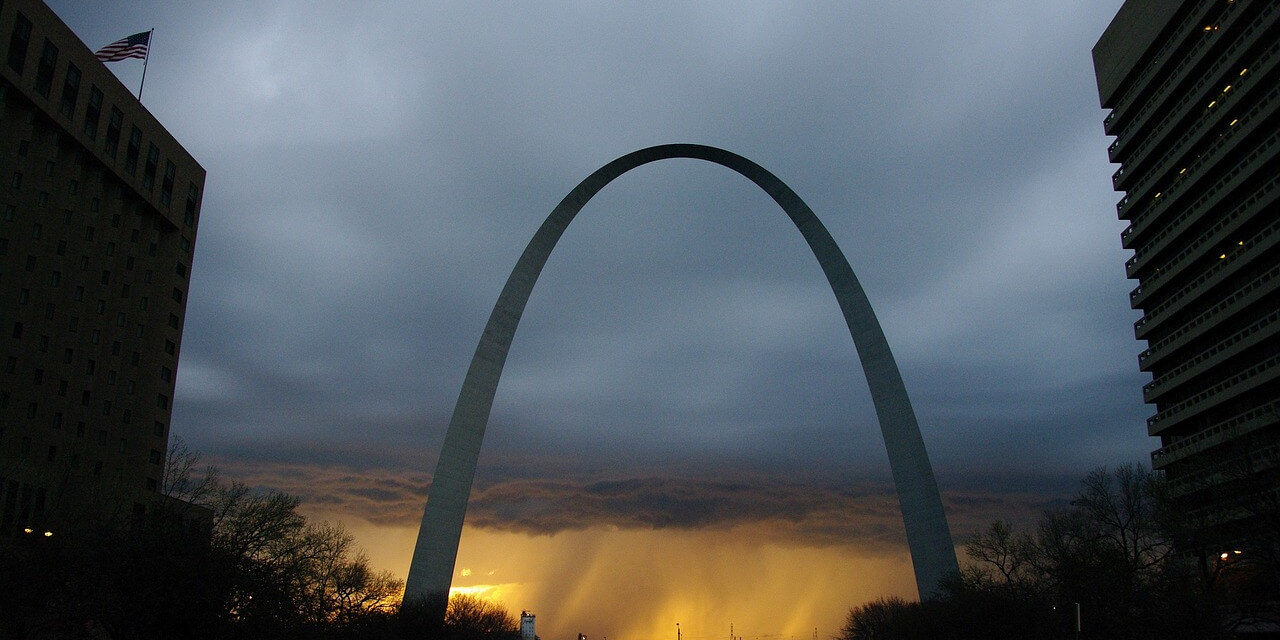Table of Contents
Overview / About the Park
Gateway Arch National Park rises on the banks of the Mississippi River in St. Louis, Missouri. Though small compared to most U.S. parks, it carries immense historic and symbolic value. The park’s centerpiece the 630-foot stainless steel Gateway Arch honors the role St. Louis played as the “Gateway to the West” during America’s westward expansion in the 19th century.
Completed in 1965 and designed by architect Eero Saarinen, the Arch remains the tallest monument in the United States. The park also includes the Old Courthouse, a site tied to the landmark Dred Scott case, which shaped the nation’s civil rights history.
Wildlife & Nature
While Gateway Arch is primarily an urban park, it still offers green space and native plants along the riverfront. Visitors might see songbirds, squirrels, and rabbits in landscaped areas, especially during migration seasons. The park’s restored gardens use local flora to support pollinators and connect visitors to the natural environment surrounding the Mississippi River.
Experiences & Activities
- Ride to the Top: Take the tram inside the Arch to the observation deck for sweeping views of St. Louis and the Mississippi River.
- Museum at the Gateway Arch: Explore interactive exhibits about Native American life, westward expansion, and the Arch’s construction.
- Old Courthouse: Learn about the Dred Scott trials and early legal battles for civil rights.
- Riverfront Walks: Stroll along the landscaped promenade and enjoy views of steamboats and bridges.
- Photography & Picnicking: The Arch’s curves, especially at sunrise or sunset, make for iconic photos.
- Ranger Talks: Join interpretive programs to learn about the park’s architecture and symbolism.
Best Time to Visit
The park is open year-round, but the best time to visit is spring (April–May) or fall (September–October) when temperatures are pleasant and the city’s humidity is lower.
Summer can be hot and crowded, while winter is quieter but chilly. Morning visits are ideal for fewer crowds and softer light for photography.
How to Reach & Park Entry
- By Air: The nearest airport is St. Louis Lambert International Airport (STL), about 15 miles away.
- By Car: The park is easily accessible from downtown St. Louis, near Interstates 44, 55, 64, and 70.
- By Train or Metro: The Gateway Arch-Laclede’s Landing MetroLink station is a short walk from the Arch grounds.
- Entry Fee: Entrance to the park and museum is free, but tram rides to the top of the Arch require tickets (around $15–$19 for adults).
Where to Stay / Camping Options
- Downtown St. Louis Hotels: Numerous options are within walking distance, including riverfront hotels with Arch views.
- Nearby Lodging: Budget and boutique accommodations are available in neighborhoods like Soulard and Central West End.
- Camping: There are no campgrounds within the park, but camping is available at St. Louis North Jellystone Park and Dr. Edmund A. Babler Memorial State Park (about 30 minutes away).
Travel Tips / Safety Notes
- Book tram tickets in advance they often sell out, especially on weekends.
- Be prepared for security screening before entering the Arch.
- Wear comfortable shoes; exploring the park and riverfront involves a fair bit of walking.
- Summer visitors should bring sun protection and water the metal surfaces and open plazas can get hot.
- Parking is available nearby but limited; public transit is often easier.
- The park is wheelchair accessible, and the museum offers excellent interpretive displays for all ages.
Packing List
- Comfortable walking shoes
- Hat, sunglasses, and sunscreen (especially in summer)
- Water bottle
- Camera or smartphone for photos
- Light jacket (spring/fall)
- Printed or digital tram tickets
- Small daypack for essentials
Visitor Statistics
Gateway Arch National Park welcomes around 2 million visitors each year. The Arch’s observation deck is one of the most photographed spots in the Midwest, drawing travelers from around the world. Peak visitation occurs in summer, but locals often enjoy the park year-round for walks and riverfront events.
Conservation & Responsible Tourism
While Gateway Arch is more historical than wild, its management still focuses on sustainability. Efforts include:
- Restoring native plants along the riverfront to reduce erosion.
- Reducing energy use in the museum and tram systems.
- Encouraging visitors to use public transport and recycle.
- Preserving cultural landmarks like the Old Courthouse for future generations.
Gateway Arch National Park stands as a blend of innovation, history, and symbolism a modern reminder of exploration and progress. Whether you’re riding to the top, learning the stories of the pioneers, or watching the Mississippi flow below, it captures the spirit of the American journey in a single, sweeping arc of steel.












